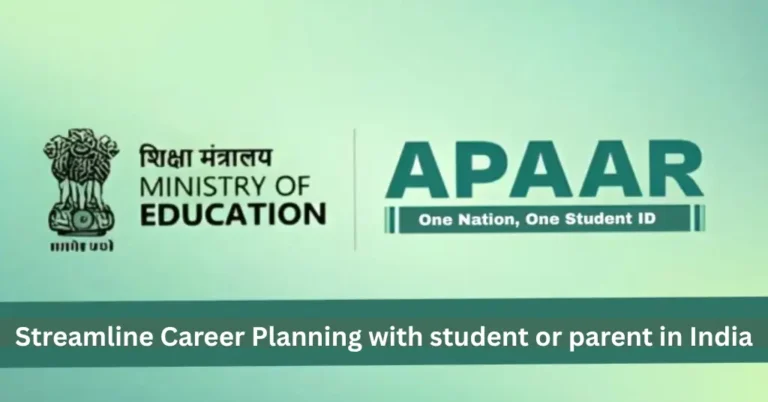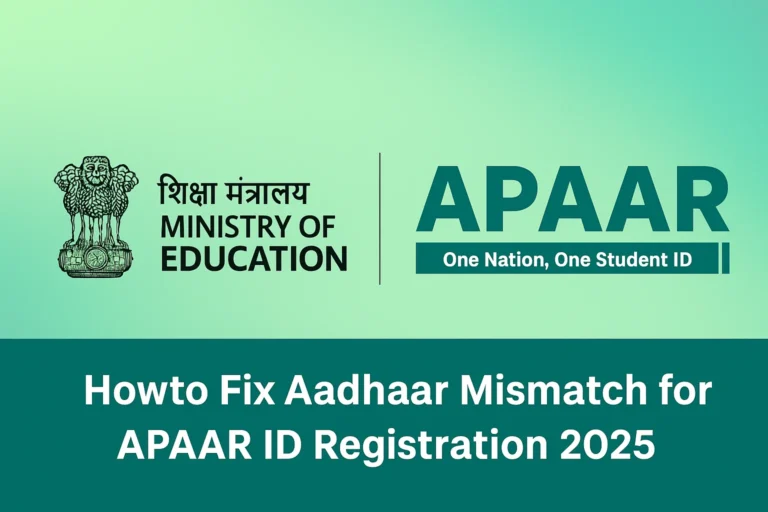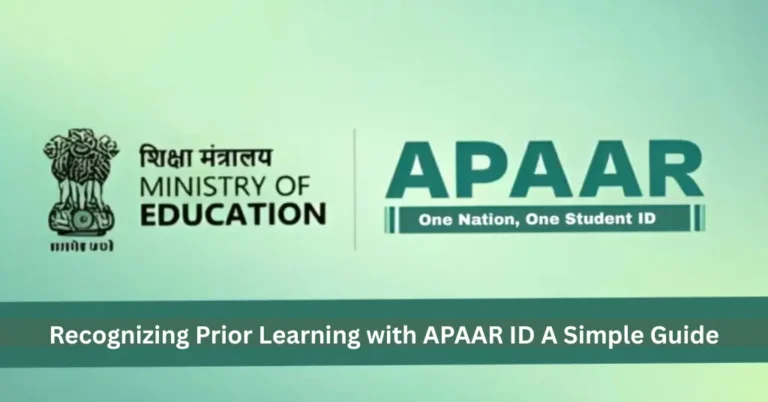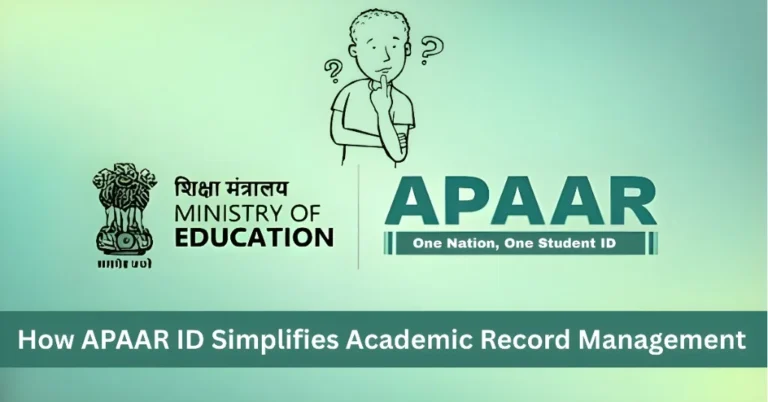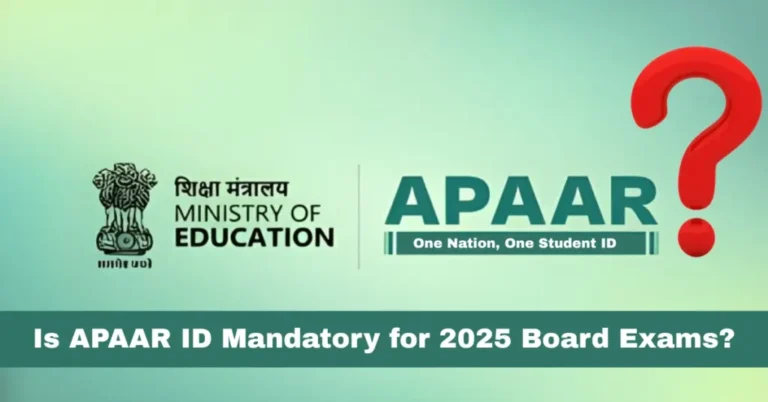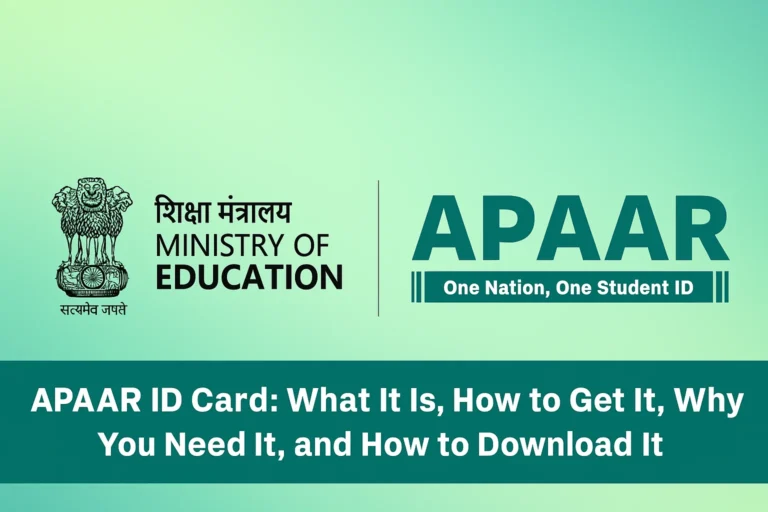Enhance Scholarships and Admissions for APAAR ID Students
India’s educational landscape is undergoing a digital revolution with the integration of the APAAR ID (Automated Permanent Academic Account Registry) — a lifelong academic identity that consolidates every learner’s achievements, qualifications, and skill credentials. Beyond its technological significance, the APAAR initiative is a transformative step toward transparent, inclusive, and merit-based access to scholarships and admissions.
By linking academic records, verified achievements, and student identity under one secure platform, APAAR aims to streamline the scholarship process, simplify admissions, and promote equitable educational opportunities across the nation.
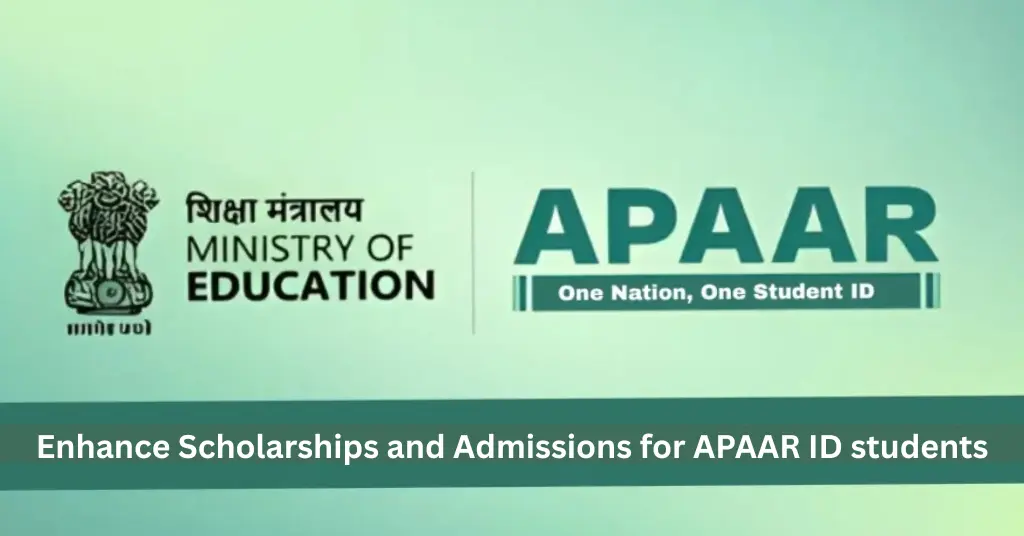
Understanding the Role of APAAR ID in Education
The APAAR ID, established under the framework of the National Education Policy (NEP) 2020, functions as a unique digital identifier for students across all levels of education. It securely stores academic credits, certifications, and extracurricular achievements on the Academic Bank of Credits (ABC) platform.
This centralized database allows institutions, government bodies, and scholarship agencies to access authentic and verified academic data, thereby eliminating fraud, paperwork, and inefficiencies in the selection process.
The Vision: Promoting Equality and Transparency in Opportunities
The Government of India envisions APAAR as a tool to democratize access to educational resources. It aims to:
By integrating technology into educational governance, APAAR bridges the gap between potential and opportunity.
Simplifying the Scholarship Application Process
Traditionally, students faced challenges in applying for scholarships due to repetitive documentation, inconsistent data, and long verification delays. APAAR addresses these issues by:
As a result, the entire scholarship process becomes faster, more accurate, and student-friendly.
Enhancing Transparency and Reducing Fraud
One of the major concerns in scholarship distribution is document manipulation and identity fraud. APAAR ensures that all academic data is tamper-proof, verified, and securely stored, minimizing human error and misrepresentation.
Institutions and government agencies can instantly verify records, ensuring that scholarships reach genuine and deserving students without delay.
APAAR ID and Admission Efficiency
The admissions process in India often involves repeated document submissions and verification bottlenecks. With APAAR integration, students can digitally share verified credentials directly from their Academic Bank of Credits, eliminating the need for physical documents.
This facilitates faster admissions, accurate merit evaluation, and uniform verification across universities, colleges, and technical institutes.
Connecting Academic Achievement with Opportunity
The APAAR system creates a direct linkage between academic performance and opportunity. Scholarship providers can analyze a student’s complete learning trajectory — from marks to extracurricular achievements — ensuring that merit-based and need-based scholarships are awarded fairly and efficiently.
It empowers students from rural and marginalized backgrounds by giving them equal visibility in national scholarship databases.
Integration with National Scholarship Portals
APAAR’s interoperability with government platforms like the National Scholarship Portal (NSP) enables one-time registration for students, with automatic updates of their verified credentials.
This integration ensures seamless coordination among ministries, educational boards, and funding agencies, strengthening India’s digital education ecosystem.
Data-Driven Decision Making in Admissions
By consolidating academic data, APAAR supports data analytics and predictive modeling in admissions. Institutions can assess applicant profiles holistically—considering both academic and skill-based achievements.
This enables universities to make informed, merit-driven admission decisions, fostering fairness and inclusivity in the selection process.
Scholarships for Skill-Based and Vocational Education
The APAAR system not only records traditional academic data but also integrates vocational and skill-development credentials. This inclusion expands scholarship access to students enrolled in polytechnic, ITI, and skill-based programs, thereby supporting holistic talent development.
As India focuses on employability and skill readiness, APAAR ensures that funding opportunities extend beyond conventional degree programs.
Reducing Administrative Burden
By automating verification and eligibility assessment, APAAR drastically reduces the administrative workload on schools, colleges, and government departments. Scholarship committees can evaluate candidates faster, and admissions offices can validate credentials in real-time, leading to improved efficiency and reduced processing time.
Empowering Underprivileged Students
APAAR plays a vital role in promoting social equity and inclusion. Students from low-income backgrounds often lose access to opportunities due to document unavailability or verification delays. With APAAR, their verified data remains accessible anytime, anywhere—ensuring continuous eligibility for scholarships and admissions regardless of geographic or economic barriers.
Institutional Advantages of APAAR in Scholarship Management
For institutions, APAAR streamlines:
This integrated system enhances institutional accountability and supports government funding audits.
Integration with Government Financial Systems
The APAAR ecosystem is designed to align with Direct Benefit Transfer (DBT) mechanisms. This ensures instant and traceable scholarship disbursement directly to student bank accounts, minimizing delays and leakages.
Through this integration, the government reinforces transparency and ensures that financial support reaches genuine beneficiaries efficiently.
Promoting Meritocracy in Higher Education
By providing a verified academic trail, APAAR encourages students to focus on consistent performance and holistic development. Institutions and scholarship providers can rely on authentic data to identify truly meritorious candidates, fostering a culture of meritocracy and excellence.
International Recognition and Admissions
As Indian students increasingly pursue global education, the APAAR ID can serve as an internationally recognized digital credential, simplifying foreign university admissions. Verified academic data enhances credibility, facilitating smoother recognition of Indian qualifications abroad.
Encouraging Collaboration Between Stakeholders
The success of APAAR in improving scholarships and admissions depends on coordinated efforts between government bodies, educational institutions, and private scholarship providers. Such collaboration ensures uniform adoption, data sharing, and system interoperability, driving the long-term success of India’s educational reforms.
Addressing Implementation Challenges
While promising, the implementation of APAAR faces obstacles such as limited digital access, data literacy issues, and system integration challenges. Continuous capacity building, awareness programs, and technical support are essential to ensure equitable adoption across all regions and institutions.
Future Outlook: Toward an Intelligent Scholarship Ecosystem
The next phase of APAAR aims to integrate Artificial Intelligence and machine learning to recommend scholarships automatically based on students’ profiles and academic performance. This smart scholarship ecosystem will further enhance accessibility and efficiency.
Impact on India’s Educational Equity
The APAAR initiative strengthens India’s vision of inclusive and equitable education by eliminating systemic barriers, streamlining processes, and ensuring that no deserving student is left behind due to administrative inefficiencies or lack of access.
Frequently Asked Questions (FAQs)
1. How does APAAR ID simplify scholarship applications?
APAAR automatically links verified academic data with scholarship portals, reducing manual entry and ensuring instant eligibility verification.
2. Can APAAR ID be used for both government and private scholarships?
Yes, the system supports integration with multiple funding agencies, including government schemes and private organizations.
3. How does APAAR improve the admission process?
APAAR allows institutions to access verified academic records digitally, eliminating document duplication and speeding up admission verification.
4. Is APAAR data secure and private?
Absolutely. The APAAR system follows strict data protection protocols, encryption standards, and consent-based data sharing.
5. Will APAAR ID support international admissions in the future?
Yes, as part of India’s digital education initiatives, APAAR aims to enable globally recognized, verifiable academic credentials for international use.
Final Thoughts
The APAAR ID represents a milestone in India’s journey toward a digitally unified, transparent, and equitable education system. By linking verified academic data with scholarship and admission processes, APAAR empowers students, institutions, and policymakers alike.
It simplifies access to financial aid, strengthens merit-based selection, and fosters inclusivity—aligning with the vision of “Education for All” under the NEP 2020. As the system matures, APAAR will serve as a foundation for lifelong learning and equitable opportunity, ensuring that every learner’s potential is recognized, supported, and realized.
